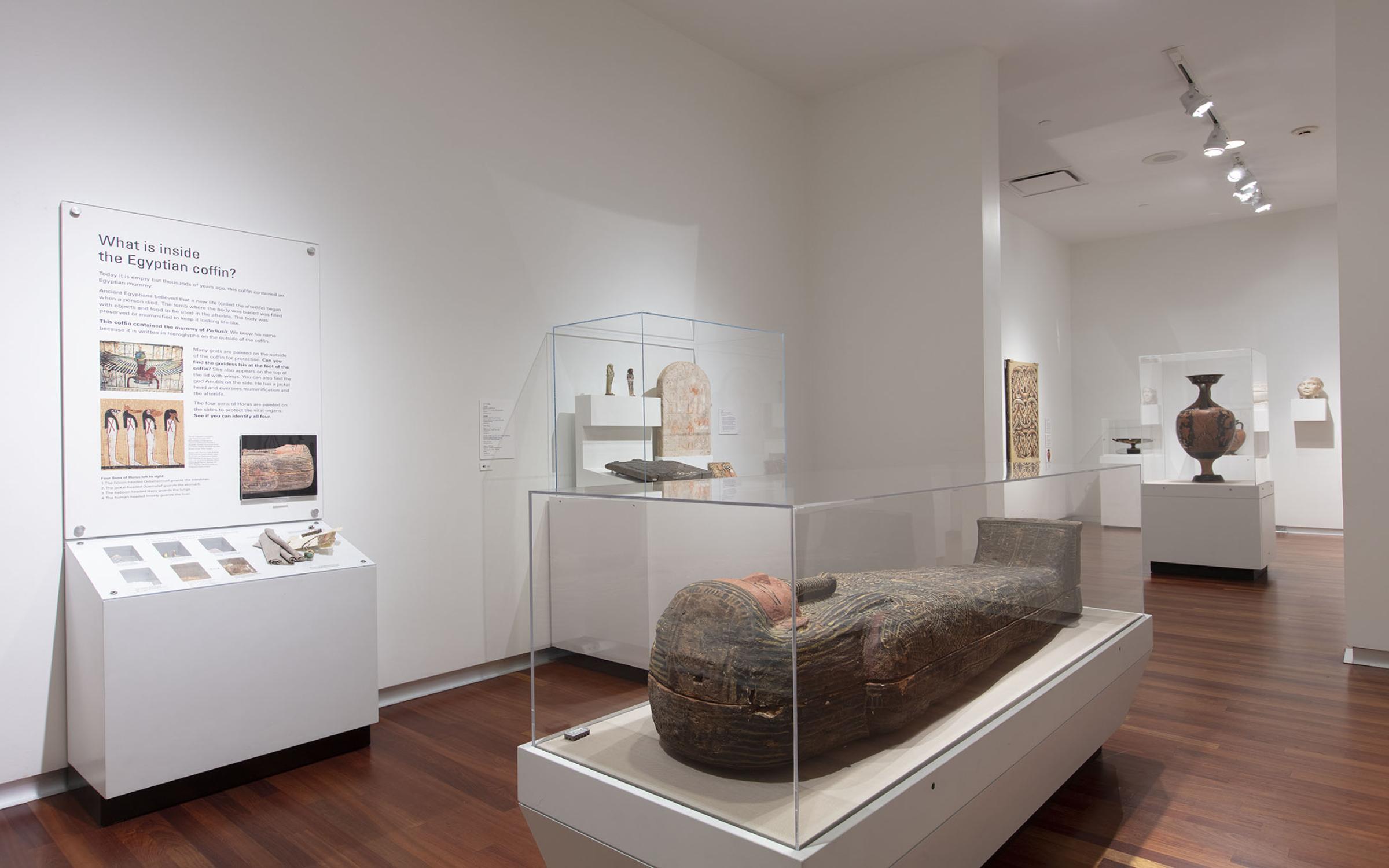
Drawn from the Museum’s collection of Egyptian, Greek, and Roman antiquities, this exhibition focuses on the theme of res mortis—a Latin phrase that loosely translates as “matters of death” or “things of death.” Each culture developed a rich mortuary cult tradition with funerary objects at the center of each belief.
For ancient Egyptians, funerary objects reflected their intense preparation to protect and sustain one's Ka, or spirit, in the afterlife. The twenty-sixth dynasty coffin for a man named Padiusur is covered with images and spells meant to help his spirit undertake the perilous journey to the underworld. Even after judgment and entrance to the afterlife, the immortal spirit still had human needs. Many tomb offerings, therefore, were representations of food and drink such as the table of offering for a person named Padibastet.
In classical Greece, ceramics were a popular funerary offering in place of costly metal vessels. Initially, decorated ceramics were repurposed as gifts for the dead. Later, among the Greek colonies in southern Italy, workshops created a class of oversized pieces that had no other purpose than grave good.
Centuries later during the Roman Empire, concepts of the afterlife gradually transformed as people adopted new beliefs. The late Roman marble sarcophagus contains a variety of pagan symbols pointing to a happy afterlife that Christianity would adopt when it became the empire's official religion.
In the 1950s, Natacha Rambova, one of the museum’s earliest patrons, donated most of the Egyptian collection, which she had acquired while traveling in Egypt. Greek and Roman holdings come from de-accessions from the Museum of Fine Arts Boston and purchases over the years. Any future loan, gift, or purchase to this collection must meet the 2013 AAMD guidelines on the acquisition of archaeological objects.
